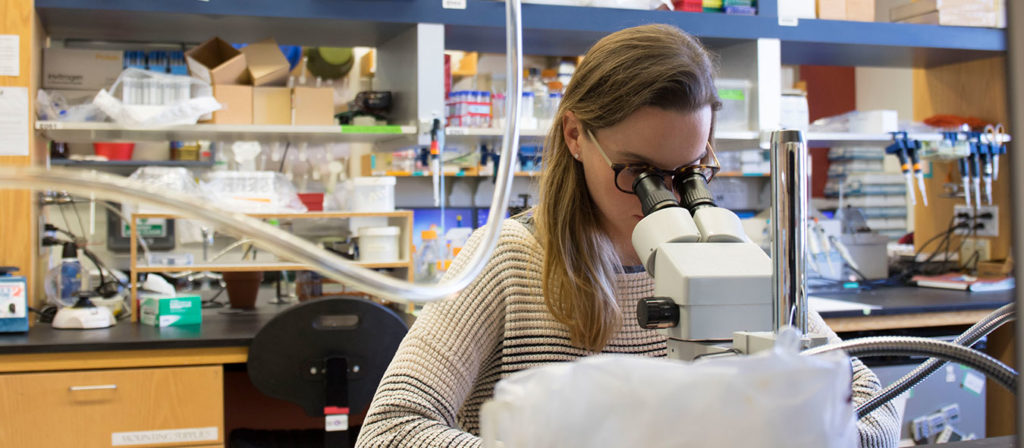Just as no two snowflakes are alike, a new study by Kristyn Lizbinski, a doctoral student studying biology at West Virginia University, reveals that neurons may be just as diverse.
Neurons communicate via chemicals called neurotransmitters that can have different effects on the brain based on the receptor proteins expressed by other neurons. Neurotransmitters are often used to classify neuron types because each neurotransmitter can be thought of as a tool for communicating with other neurons.
“In order for us to understand our own brain, we have to understand how diverse populations of neurons coordinate their activity to ultimately result in a behavior or decision,” Lizbinski said. “We’re also beginning to understand that neurons are like snowflakes. Each one is different, each possessing a different set of tools. That’s where this study comes in.”
As Lizbinski was looking at a diverse population of neurons three years ago, she realized that patterns of neurotransmitter expression proved to be much more complicated than expected.
“I hoped to find which neurons expressed which transmitters and if there were any organizing rules to the neurons that express multiple neurotransmitters,” Lizbinski said. “In other words, we’re trying to see if specific ‘tools’ are always within the same population of neurons. Does one population of neurons have both a hammer and a screwdriver? Does another population of neurons have a hammer and a saw? The presence of different neurotransmitters or tools in a single neuron allows that cell to change brain activity in different ways. We used modeling to try to find the organizational rules that dictate which neurons possess specific combinations of tools.”
At first glance, there seemed to be no explanation as to which neurotransmitters were expressed together in the same neuron. This was surprising, Lizbinski explained, as one might expect that neurons of a given type should consistently contain the same set of “tools.” To solve this dilemma, she found a way to use computational modeling to assess the heterogeneous population of neurons in a non-biased way.
“It’s essentially a roadmap of which neurons are releasing what chemicals,” Lizbinski said. “We can count all the neurons that express each transmitter and then, in modeling, use probability to determine which neurons will express multiple transmitters.” This unbiased approach can be applied to more complex systems, such as neural networks in human brains, to gain insight into how neurons communicate with each other.
Lizbinski approached this question using the tobacco hawk moth in the lab of WVU biology associate professor Andrew Dacks in collaboration with Gary Marsat, assistant professor of neuroscience. Lizbinski determined which neurons expressed each neurotransmitter by using immunocytochemistry, a process that allowed her to label specific neurons in the network based on the neurotransmitters they are expressing.
“This was a cool evolution of a project that started out with just thinking about the anatomy, but then adding the modeling concept helped us take an unbiased view of the organizing principles of heterogeneity,” Lizbinski said.
Lizbinski detailed this research in her paper “Systematic analysis of transmitter co-expression reveals organizing principles of local interneuron heterogeneity,” published in eNeuro, the open access journal of the Society for Neuroscience.
“A big challenge for understanding how the brain functions is that you have to first understand the parameter space,” said Dacks, Lizbinski’s adviser. “The real brilliance in Kristyn’s approach is the use of an unbiased model to explore that space, and that’s why she should be lauded for this research.”
Lizbinski will graduate from WVU in December 2018 with a Ph.D. in biology before beginning postdoctoral research at Yale University School of Medicine’s Department of Neuroscience with James Jeanne. Lizbinski aspires to one day have her own lab.
“What I’m really interested in is the flexibility of nervous systems,” Lizbinski said. “This study explores flexibility in terms of transmitter co-expression. I plan to continue exploring the idea of flexibility and small neural circuits in my future work.”
Originally from Laura Fletcher for WVU Today.
